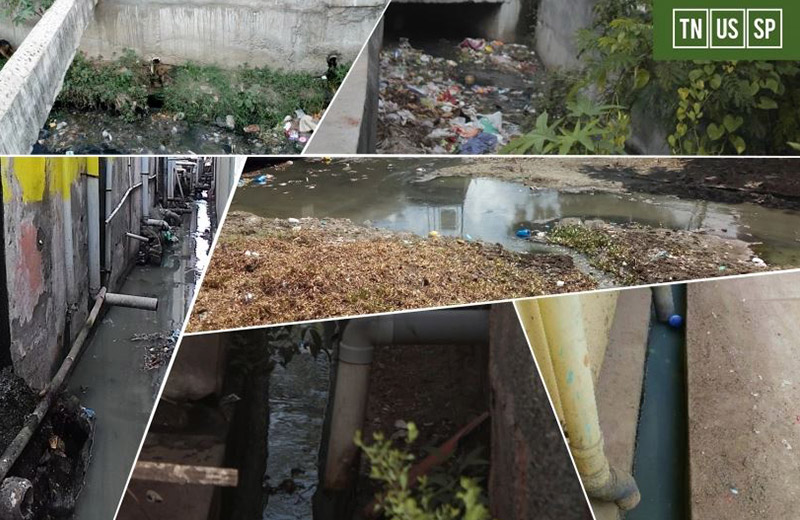So, you have finished using the toilet. And, have flushed it down. But seriously, where does it all go?
When you ask this question, the answers you get will range from septic tanks to pits to the underground sewerage systems etc. But, is that the whole story? Now that is the difficult question, which begs a real hard look at the ground reality.
Let’s travel some years back in history. It is a well-known fact that ancient India had a fine network of storm water drains, which acted both as groundwater recharge systems, as well as flood control devices. In cities like Chennai, the network of storm water drains led to ponds (kulams) which acted as natural flood control devices. Thanks to unbridled ‘development’ and growth of unplanned settlements both these ‘kulams’ and the storm water drains are polluted and choked.
How have things come to this state? One of the major contributors of pollution in storm water drains (SWDs) are the people themselves. This happens in three ways: Many of the households, which have no containment structures attached to their toilets, connect the toilets to the storm water drains. Sometimes, even households, which have containment structures, connect the outlets the storm water drains. Thirdly, it is not unusual to see that the grey water from the kitchen and bathroom being connected to the storm water drain directly.
A study conducted by Tamil Nadu Urban Sanitation Support Programme (TNUSSP) on the state of the storm water drains showed that this kind of pollution was not only common in small towns but also in mega cities. When asked why toilets and containment structures were connected to storm water drains, most of the residents said that they used the storm water drains as an easy option because it was the “common practice in the area.” Some of them also mentioned the “lack of other options” as one of the reasons.
Letting grey water from the kitchen and bathroom into the open or closed drains is a very common practice all over the country. This is also because many of the people believe that storm water drains are meant to carry the grey water. It comes as a surprise to many people when they learn that storm water drains are meant only to carry storm water and urban runoff (surface runoff of rainwater) to the natural water bodies. However, in reality, the storm water drains end up carrying all the wastewater from the cities (and towns) to the natural water bodies resulting in the grand scale pollution of the water bodies and leading to a colossal public health hazard.
How does dumping of solid waste affect drains?
Dumping of solid waste in the drains is another huge problem that affects the functioning of the drain itself. The drains are designed based on certain set of criteria like the amount of rainfall in the area, natural slope and type of soil etc., which helps to estimates the amount of storm water that will get collected in a particular area. Dumping of solid waste and wastewater into the drains affect their functioning, resulting in improper flow, siltation and stagnation of water which further leads to a whole range of problems like bad odour and serving as a breeding ground for diseases like malaria, dengue, etc.
Where does it end up?
The final destination for the wastewater, which is carried by the drains are the natural water bodies such as streams, rivers, canals etc. A research into how these waterbodies have transformed over a period of time into gutters carrying dirty water will help us understand how we are killing them slowly. Not very long ago, people used to stop to look down bridges to enjoy the scenic beauty of clean, flowing water. Today, they cover their noses and try to get away as soon as possible.
To understand this problem better, the TNUSSP team conducted catchment level assessment of drains in selected locations. Watch this space for further insights into the study.
For Further Reference:
(http://www.downtoearth.org.in/news/what-drains-mean-to-cities-44069, 2014)

Olassayil Sancy Sebastian
Junior Specialist, TNUSSP

Suneethi Sundar
Specialist, TNUSSP


Leave A Comment